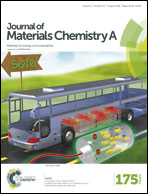Quinone and its derivatives for energy harvesting and storage materials
Abstract
In nature, quinone plays a vital role in numerous electrochemical reactions for energy transduction and storage; such processes include respiration and photosynthesis. For example, fast proton-coupled electron transfer between primary and secondary quinones in green plants triggers the rapid charge separation of chlorophyll molecules, achieving unparalleled photosynthesis with near-unity quantum yield. In addition, quinone-rich polymers such as eumelanin and polydopamine show unique optical and electrical properties (e.g., strong broadband absorbance or a switching response to external stimuli), mostly arising from their chemically disordered structures. Understanding the unique features of quinone and its derivatives can provide solutions to the construction of bio-inspired systems for energy harvesting and conversion. This paper reviews recent advances in the design of quinone-functionalized hybrid materials based on quinone's redox, electrical, optical, and metal chelating/reducing properties to determine these materials' applications in energy-harvesting and -storage systems, such as artificial photosynthetic platforms, rechargeable batteries, pseudocapacitors, phototransistors, plasmonic light harvesting platforms, and dye-sensitized solar cells.


 Please wait while we load your content...
Please wait while we load your content...